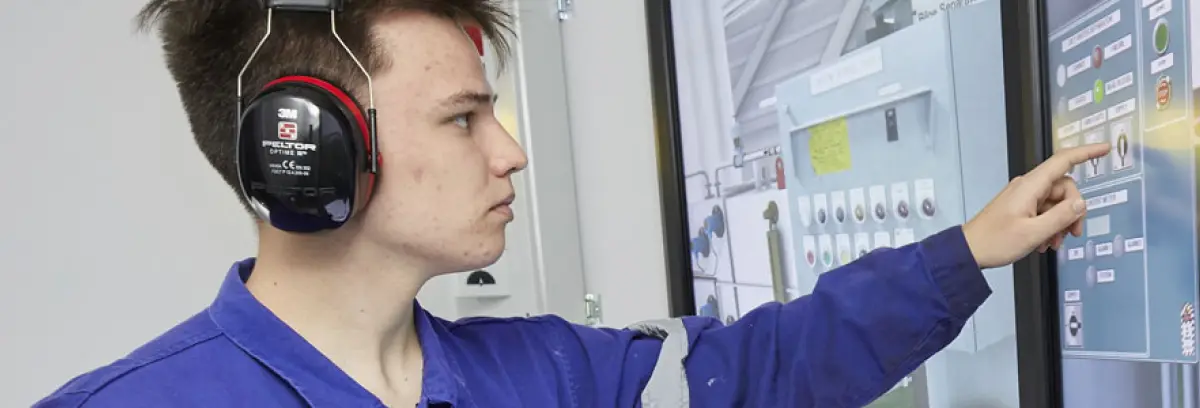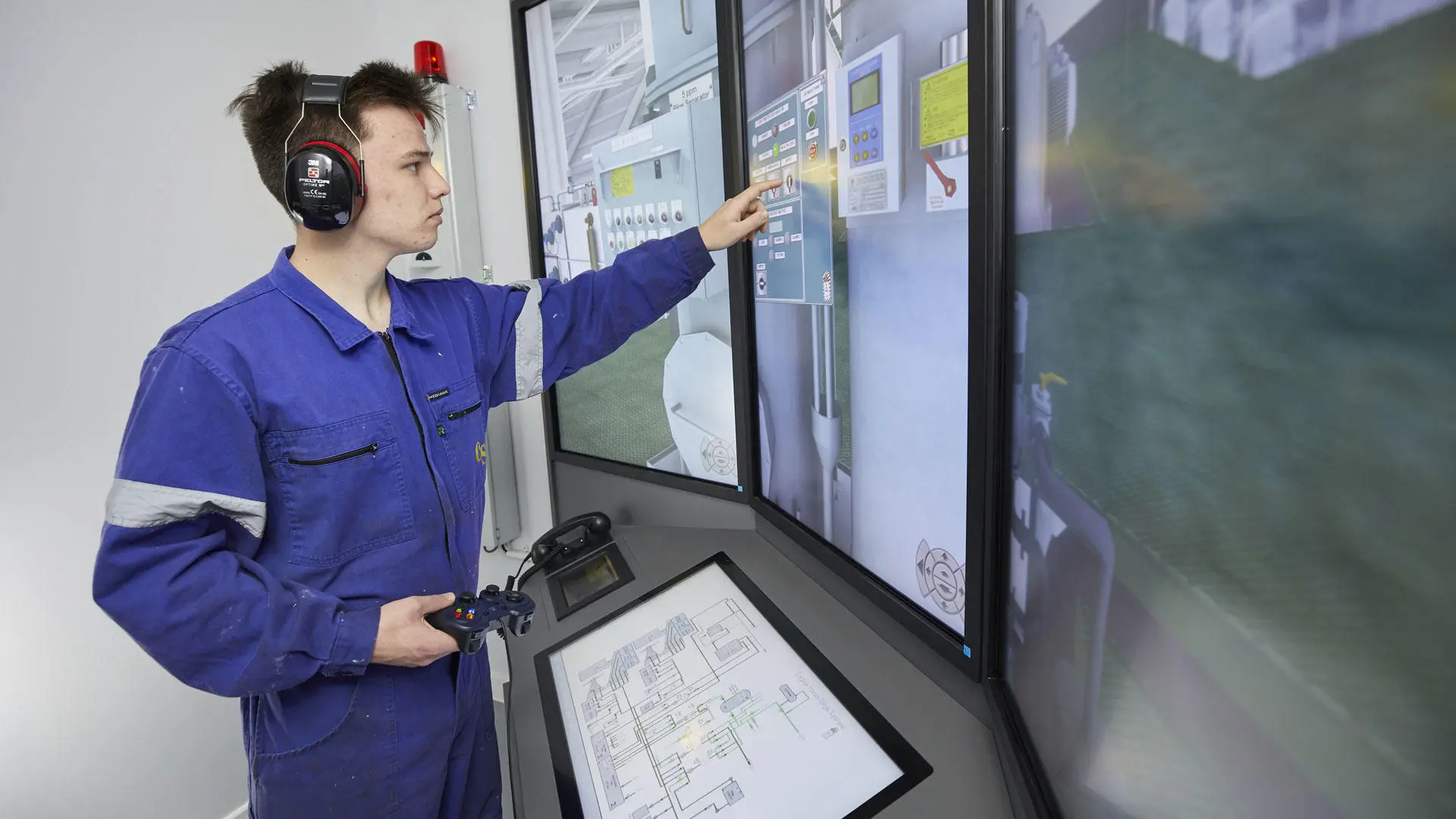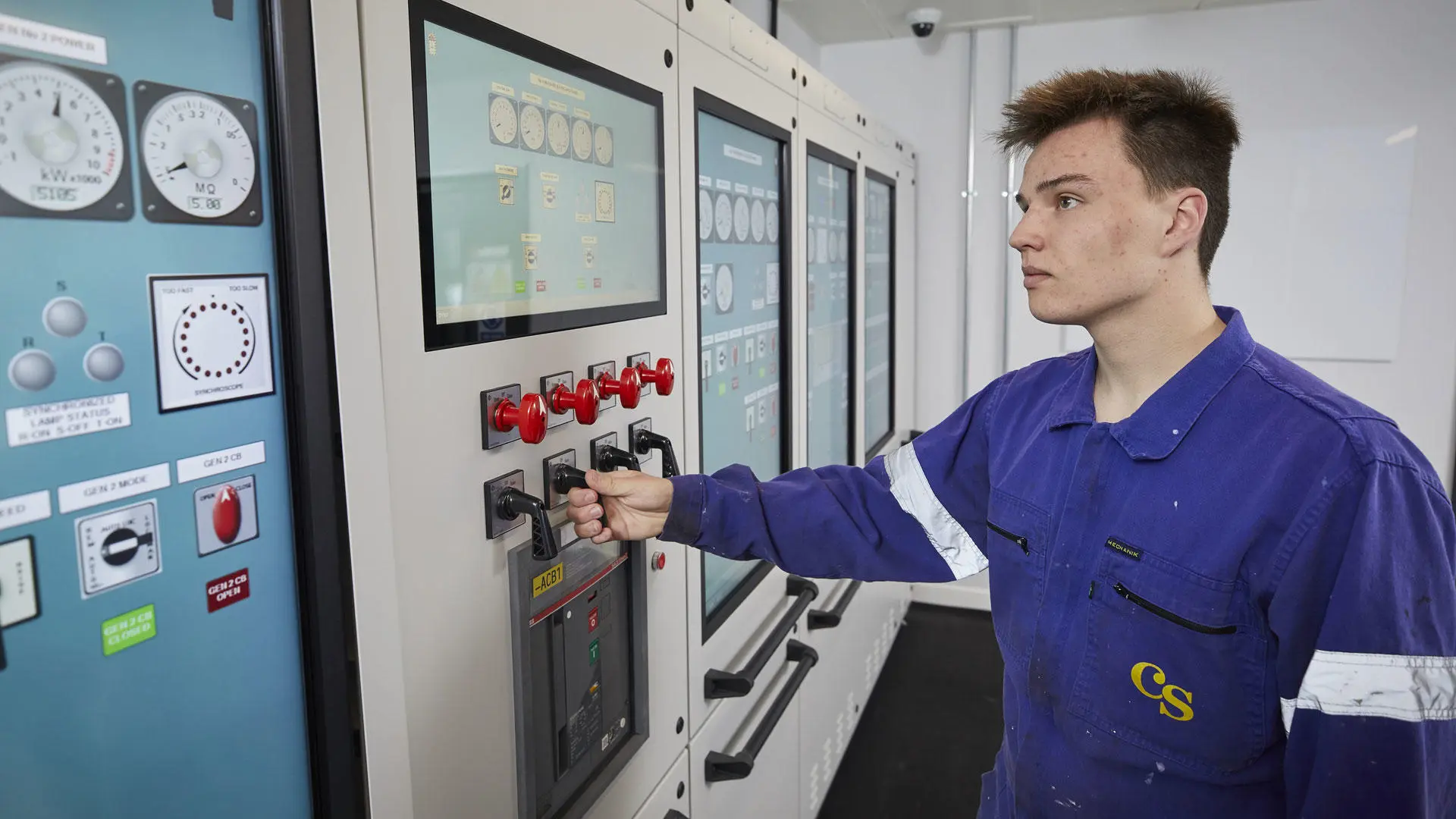- Home
- Facilities listing
- Engine room simulation
Engine room simulation

About the engine room simulator
Full mission engine room simulator
Engine control room
Key features include a control desk with a number of touchscreens allowing the operators to control and monitor the propulsion and auxiliary systems through a distributive control system (DCS), monitor and accept alarms, and carry out trend analysis of main engine performance. The room is also fitted with real throttle controls and telegraph to allow control of the engine from the control room. The control room contains the main low voltage switchboard containing real 440V breakers, synchronising panel and distribution panels.
Engine room
The engine room comprises three interactive 3D workstations equipped with a 46” monitor with a 22” touchscreen navigation panel, allowing delegates to navigate through a photorealistic engine room, which corresponds to the model in use and interacts with equipment and systems. Delegates can open and close valves, as well as stop and start electrically driven machinery, and carry out local monitoring and fault diagnosis using a toolbox. The toolbox contains a multimeter to measure voltage and current, a vibration meter, temperature probe, oil test kit and water test kit.
Emergency switchboard room
The emergency switchboard consists of a real switchboard and real circuit breakers, and a touchscreen monitor displaying the emergency generator and battery backup systems. The touchscreen allows delegates to stop and start the emergency generator and carry out monitoring and fault diagnosis using a toolbox. The toolbox contains a multimeter to measure voltage and current, a vibration meter, temperature probe, oil test kit, and water test kit.
Instructor station
The simulator is controlled from an instructor station which is inaccessible to the delegates. A bridge console is fitted to allow simulation of the bridge controls and enables the instructors to play the roles of the master and bridge watchkeepers.
The benefit of the simulator software is that it allows the instructor to introduce a large number of faults in order to test participants’ technical skills and non-technical resource management skills, as well as the cohesiveness and effectiveness of the engineering team.
Instructors are able to to monitor participants' performance through bulit-in microphones and cameras in the suite. A video recording system known as the after action review system (AAR) is also available, allowing the simulator exercises to be replayed to the course participants during post exercise debriefing sessions.
High voltage switchboard
The high voltage room simulates one of the four HV diesel generator switchboard sections and contains a real 11KVA switchboard section with vacuum circuit breaker, HV cabling and connection box. The other three HV diesel generator switchboard sections are simulated on the DCS screen. A local control panel allows manual switching of the HV breaker for instruction purposes. The HV breaker can be operated in isolation from the main simulator when the HV cruise ship model is not in use, allowing stand-alone HV training courses in line with STCW Manila amendments.

Steam plant simulator
The steam plant simulator is a fully functioning distributed control system for the steam plant of an LNG tanker. It allows motor engineers to cross-train, and steam qualified engineers to integrate the use of cargo boil off systems with their previous steam plant experience.
The simulator can accommodate up to four students - either individually on their own vessel or as a team - and can be used as stand-alone workstations for training individuals, or as an integrated control room environment for engine room resource management team training.
The system simulates a marine steam power plant that includes high pressure and low pressure cross compounded steam turbine set driving a single, fixed pitch propeller through a double reduction articulated reduction gear train. Steam is produced by two water tube boilers providing super heated steam, with each boiler having individual burner management and combustion air control facilities. The system also includes full LNG boil-off burning control.
The ship's electrical system is comprised of two steam turbo alternators at 60HZ, a three phase 440 volts supply and a diesel driven alternator. An emergency diesel alternator complying with SOLAS requirements is also included within the system. The electrical system is fitted with the associated instrumentation and protective equipment, and is represented in the suite of very comprehensive graphics.
The engine room simulator is located in the maritime simulation centre at our East Park Terrace campus.
The simulators replicate a real ship's engine room.
Gallery



Equipment
- Touchscreen controls.
- Engine room has three 3D interactive workstations equipped with a 46" monitor and 22" touchscreen navigation panel, allowing for a photorealistic engine room environment.
- Control desk for monitoring propulsion and auxiliary systems.
- Real throttle controls and telegraph.
- Low voltage switchboard containing real 440V breakers.
- Real emergency switchboard with real circuit breakers.
- HV room contains a real 11KVA switchboard section with vacuum circuit breaker, HV cabling and connection box.
Hire the engine room simulator
The set up of our full mission engine room simulator test communication, cooperation, situational awareness, decision making, team working, leadership and managerial skills. This ensures optimum engine room resource management and operations.
Find out more about external hire



